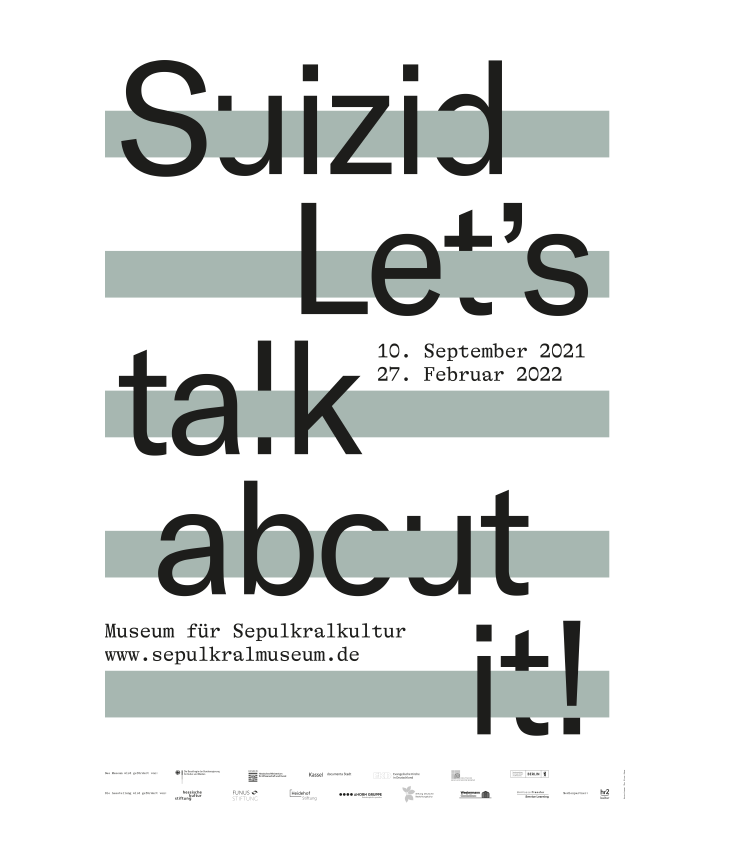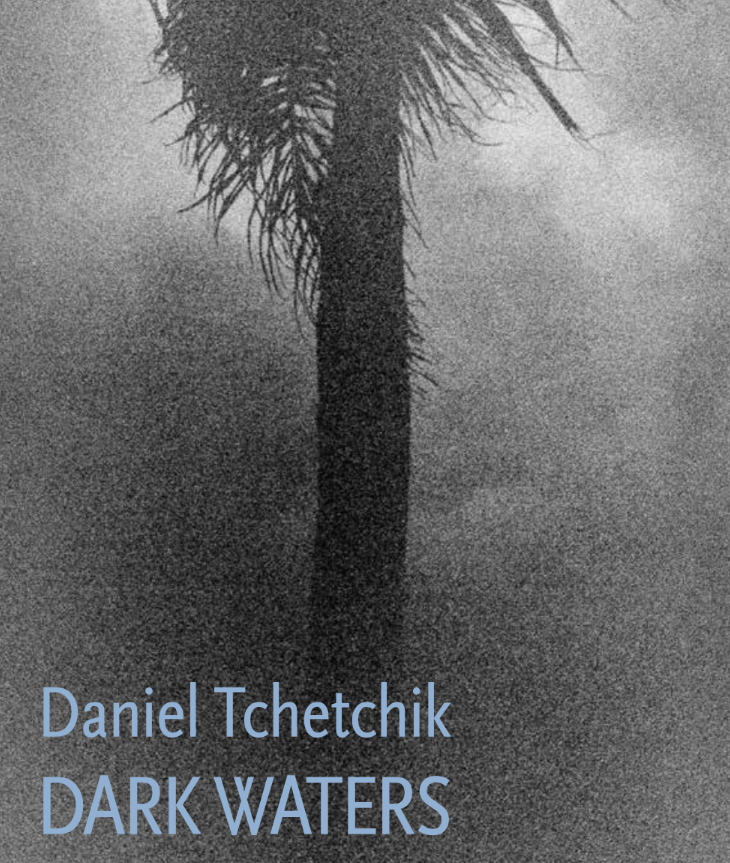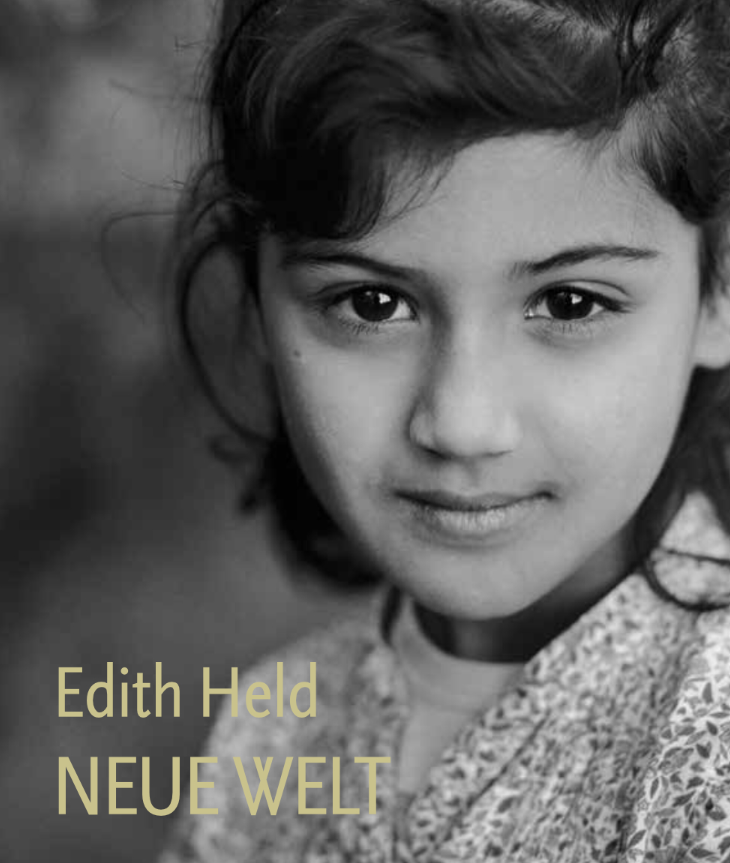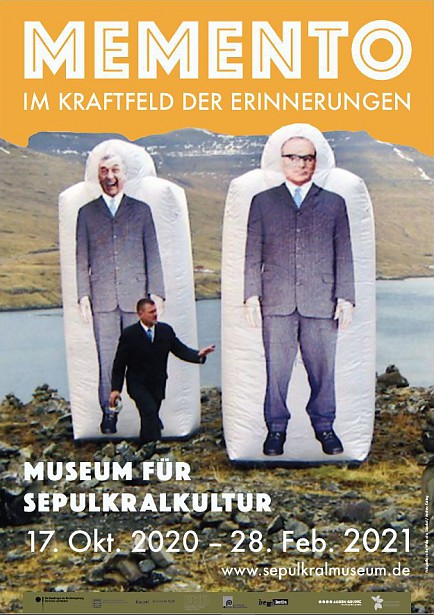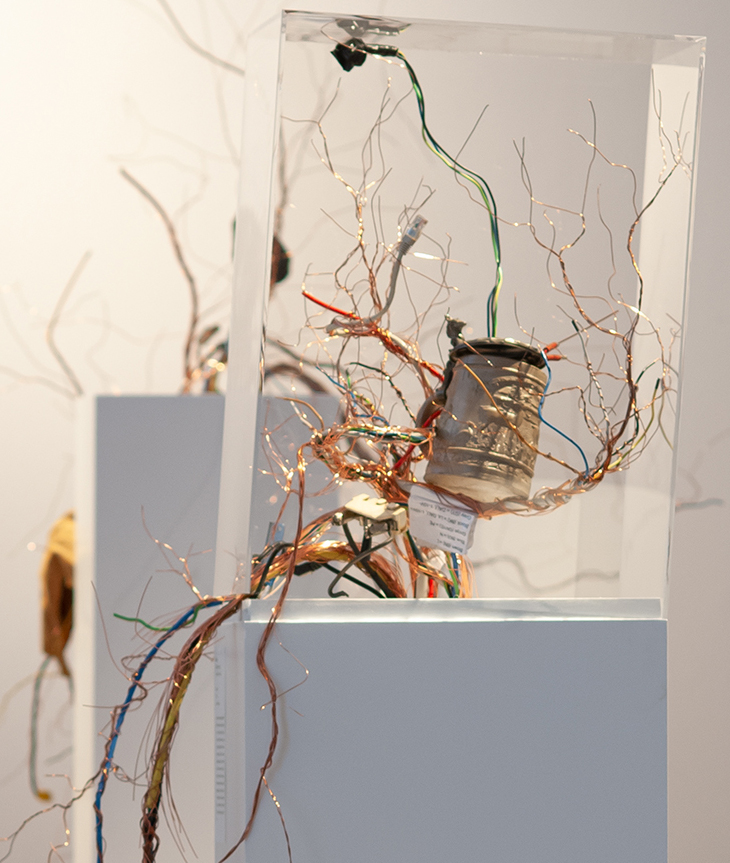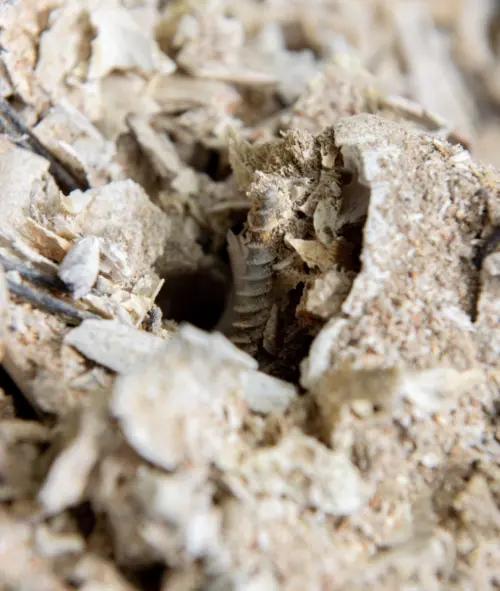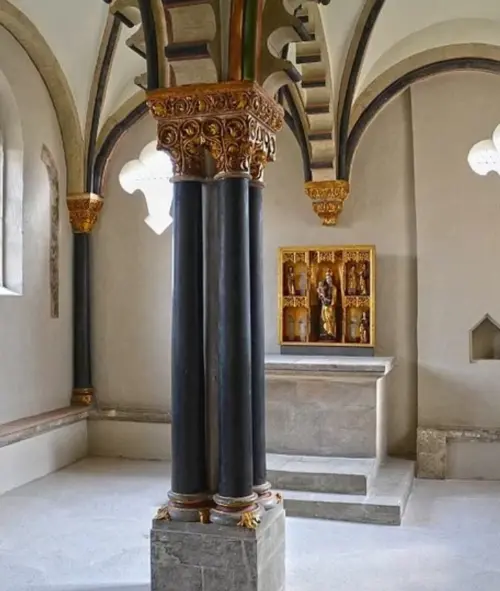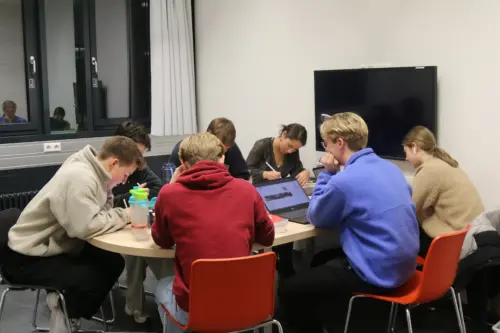Museum für Sepulkralkultur
curretn exhibition
Museum of Sepulchral Culture
The Museum of Sepulchral Culture was founded in 1992 and is dedicated to the topics of dying, death, burial, mourning and commemoration. Through education, advice and mediation in exhibitions, conferences, lectures, seminars and events, it succeeds in initiating discourses that, on the one hand, accompany the change of the sepulchral culture in a lively way and, on the other hand, offer the possibility for a conscious confrontation with death: This not only evokes the opportunity for diverse self-reflection, but also contributes significantly to recognizing the special value, uniqueness and dignity of our human existence.
The central tasks of the Museum of Sepulchral Culture and the associated Central Institute are to research, promote and communicate cultural values in the fields of burial, cemetery and memorial services. They inform the public about the social consensus – as well as legitimate conflicts – on how to deal with dying, death and mourning, and illustrate the related cultural-historical backgrounds and changes.
The foundation of the museum is the sepulchral culture that has grown up in German-speaking countries. Objects from the 15th century to the present day show how burials were held, the dying accompanied and the deceased commemorated in Germany. Social changes, which in turn have had an impact on the local burial culture, are also taken into account. For example, the permanent exhibition already includes a section on multicultural forms of burial.
Knowledge of one’s own traditions also strengthens understanding for foreign or new customs and also for other cultures. After all, every culture and religion says goodbye to its deceased in a different way and prepares for dying. Especially in a multicultural society, necessities with regard to burial and the most diverse worlds of ideas come together, which are to be experienced as an intercultural construct of a transforming sepulchral culture.
MEMENTO
In the force field of memories
An exhibition on individual forms of remembering and commemoration
In the exhibition “MEMENTO – In the Force Field of Memories”, the Museum für Sepulkralkultur dedicates itself to individual forms of remembrance and commemoration with a selection of international contemporary artworks and cultural-historical testimonies. The title refers at the same time to the attractive and repulsive effect of memories of people and experiences lost in the stream of time. The attraction of thoughts of the past and of memory images, which because of their painful psychological and emotional potential can often be accompanied by inner defense mechanisms, makes people leave their present presence – the here and now. This can be an escape from current life situations, but at the same time, in the context of mourning work, it offers a key to being able to return to a conscious and present life after a severe loss.
After the exhibition LAMENTO – Mourning and Tears (11/2019 – 03/2020) at the Museum für Sepulkralkultur was dedicated to the phenomenon of crying and the immediate affects and emotions triggered by the death of a close person, the exhibition MEMENTO – Im Kraftfeld der Erinnerungen (MEMENTO – In the Force Field of Memories), which follows in terms of content, will deal with the most diverse forms of individual remembrance and commemoration of the deceased.
The way in which people process the loss of familiar and beloved persons and express their emotional consternation is, in addition to cultural traditions, ideological and social values or collective historical consciousness, decisively shaped by individual traits and by the respective life situations. Memories are subject to constant change – depending on the situation and phase of life – which includes their meanings and also their meaning. Many people therefore seek a personal language and form of visualization of the past by transforming memories into sensual actions that can be experienced or by carefully preserving personal legacies as plastic carriers of memory. Solemnly, sadly, lamenting and lamenting, loudly and extrovertedly, dancingly, silently or in the form of ritual acts, relatives and friends remember and commemorate their deceased and reactivate the past in the present through remembering. Active remembering and commemoration repeatedly and permanently brings to mind who and what should not be forgotten in a family, social, religious or national/ethnic community.
The death of a familiar person and the inextricably linked performance of memorial practices have been and continue to be the occasion of cultural production in the form of individual rituals, such as visiting personal memorial sites, the safekeeping of legacies, or the annual commemoration of death anniversaries. Individual memorial acts accompany, animate, and enable the personal process of remembering, integrating it into our lives, which seek to regain tranquility after an experience of loss.
Literature, music and the visual arts can transform memories into aesthetic formats through pictorial and written works or through compositions. On the one hand, these can themselves be memory work and make it comprehensible in the work, and on the other hand, they can carry the motivating potential to develop personal memorial forms themselves.
The dialogues between international artistic works in the media of photography, video/film, sculpture, installation, graphics, and performance and cultural-historical objects from the museum’s collection, unfold a cultural-historical reference space for contemporary art, which is the poetic bearer of subjective memories. In addition to historical testimonies and artistic works, we will present selected virtual memory formats such as mourning forums on the Internet, memory videos on YouTube, and interactive websites that initiate and accompany individual memory processes. Furthermore, we will inform about the pilot study “Family Listening Book” of the University Hospital Bonn, which gives seriously ill parents the opportunity to record their very personal life story for children and relatives in a sound studio with a radio journalist.
Artists: Christian Boltanski (F) | Karolin Bräg (D) | Sofia Hultén (SE) | Andrew Kotting (GB) | Karsten Krause (D) | Martin Kreuels (D) | Lucy Powell (GB) | Maud Quaedvlieg (NL) | Tina Ruisinger (CH) | Stefanie Silber (D) |Jaan Toomik (ES) | Timm Ulrichs (D) | Catrine Val (D) | Lorenz Widmaier (D) | Dorothee von Windheim (D)
PROJECTS: Family Audio Book, Judith Grümmer (D), Dear Photograph, Taylor Jones (CA), Rest in Vinyl / Andvinyly, Jason Leach (GB), Memorabilia, Museum für Sepulkralkultur
For more information, visit the Museum of Sepulchral Culture website:
https://www.sepulkralmuseum.de/ausstellungen/sonderausstellungen/memento–im-kraftfeld-der-erinnerungen
Networking
Marco Di Carlo
In everything our world is networked. We live on a planet and experience how fertile and at the same time unpredictable in its consequences global exchange is. Flora and fauna, water, air, oceans, climate and, of course, people and their goods circulate; and this – as has been the case for centuries – is also accompanied by pathogens. Structures of all kinds form and network themselves and are in permanent connection. Parallel to this, processes of decomposition always take place, because life is change and a constant juxtaposition of beginning and end.
As part of the final exhibition of his Georg Meistermann Fellowship, sculptor Marco Di Carlo (b. 1980) will traverse the Museum für Sepulkralkultur with structures made of cables and objects. He incorporates organic material from found objects and designs his installations as a symbolic coexistence of interpenetrating nature, technology and culture. Wood, bones or skins regain moments of their liveliness in a fantastic way through their integration into a fabric of cables and electronic components.
Di Carlo’s works play with the ambivalence of our existence. We grasp death and life as different states, but from an evolutionary perspective these two categories, so familiar to us, hardly make sense anymore, because so-called life consists at the same time of innumerable processes of cross-linking and decomposition of molecules. Man is part of it and does the same to these processes. For this he uses his abilities as Homo Faber, as a creating and therein inventing living being, but the arrogance of the technical creator leads him again and again to the limits of the possible.
In the realization of human limitations towards nature and cosmos, the chance of humility towards our existence is found, which can only be borne in a holistic understanding of the world. And so we too network and decompose, in the hope of spiritual, aesthetic or technical developments. Hopefully, these will not only lead us to the brink of exhaustion, but in accepting our finitude, will also allow us to understand and celebrate life in its essence. We are finite because we live, and we create because awareness of our finitude enables us to do so.
For more information, visit the Museum of Sepulchral Culture website:
https://www.sepulkralmuseum.de/ausstellungen/archiv/marco-di-carlo–zernetzung
Edith Held
NEW WORLD
Who experiences current history intensively in an unbiased way? Who tells honestly and is authentic in his description? How can we describe what is happening in the world more vividly than through children? More than 100 children from Berlin refugee homes were portrayed for the photo project NEUE WELT. All the children tell their stories in their own words. They are about home, family, flight, a new home. The children tell of their worries, their joys, their fears and their dreams, of the unsaid or the unspeakable.
The children from different countries and cultures have
arrived in a NEW WORLD.
The photo project of the photographer Edith Held (born 1966 in Donaueschingen/ DE) was created in collaboration with Gunter Haedke, initiator of the “galerie auf zeit” since September 2014.
All portraits were photographed with a medium format camera 6×7 analog. For each child one film. Each film has 10 pictures. All portraits were taken using only natural light and are unedited.
The children received a Polaroid photo as a memento.
Research. Inquiries. Arrange appointments. Obtain parents’ consent. Coordinate. Organizing countless photo shoots. Record and transcribe interviews. Documenting. Translate. And again: research. Inquiring. Follow up. Rework. Writing down and making understandable. Mapping and making visible. Not everyone was enthusiastic, not everyone agreed, not everyone supported.
NEUE WELT is a snapshot of all the children who have contributed their own personal
personal part.
herman de vries perish
In the work of the internationally renowned artist
herman de vries (b. 1931 in Alkmaar/ NL) focuses on chance, change and the permanent transformation of all being. Since the 1950s he has experimented with drawings, painting, installations, publications and increasingly with natural materials, whose transience he exhibits. “chance and change” herman de vries sees as the framework of his life, from which he can never step out.
Since the 1960s, he has made many and long journeys.
In addition to being open to the wider world, de vries also sought out the intimacy of nature to discover his working materials as well as his artistic methods there. His studio is the Steigerwald, where he has lived for five decades.
Something passes: a flower, a life, time. It is the active moment of passing that herman de vries reveals to us in his works. With every step, with every heartbeat, with every blossom, life passes in us and around us. It changes in it, transforms its shape, but never its essence. To live is to die is to live. In a poem, de vries captures his joy at being alive in the face of transience. “embraced by the world i will die”. World is part of us and we of it.
In dance as an expression of joy, we pass away. What a comforting
image of the inevitable.
Daniel Tchetchik
DARK WATERS
Since the beginning of the “Great Migration” in the 1990s, millions of people have made their way to Europe. No one knows how many have died on the perilous journey. The Mediterranean Sea in particular has become the grave for thousands and thousands of often nameless victims. The fate of these people has not left the photographer Daniel Tchetchik (born 1975 in Tel-Aviv/ ISR) in peace. From his travels and research around the Mediterranean, he has brought back his book of photographs DARK WATERS, which shows different images of the refugee crisis than we are familiar with.
The photos are already different in that – at least until the short epilogue at the end of the book – we don’t see a single person in them: no refugees on overcrowded rubber dinghies, no corpses floating in the sea or washed up on the beach, no rescue ships, no camps where people fished out of the sea are locked up and waiting for their further fate.
Instead, Daniel Tchetchik has traveled to various coastal locations in Spain, Italy and Greece and looks out over the Mediterranean from the supposedly safe haven of Europe. What he sees is the horror that opens up before him, the horror that comes when looking at the endless expanse of water and waves lapping against rocks. The view wanders over empty beaches, over deserted coastal towns and fences, walls and bunkers on the beach,
with which Europe is building itself into a fortress that seems cold and empty and heartless.
To mark World Suicide Prevention Day on September 10, the Museum of Sepulchral Culture opened a comprehensive special exhibition on the topic of suicide. The exhibition presents information, suggestions, challenges and opportunities that reflect a social and personal approach to suicide. With a view to art and cultural history, humanities and social sciences, and medicine, but above all to the here and now, our goal is to force a public communication on suicide. A book publication and an extensive accompanying program expand the exhibition in cooperation with other institutions, associations and societies.
Suicide and suicidality are omnipresent and yet taboo. They are symptoms of psychosocial problems. The omnipresence on the one hand and stigmatization and taboo on the other hand represent a great contradiction in the public discussion of suicide. This contradiction is also noticeable in our museum, where references, documents and objects in clear connection with suicide are hardly present or known. The goals of the special exhibition are therefore clear and urgent: to remove the taboo and destigmatize suicide and the experiences and circumstances that trigger it. In addition to the exhibition, there will also be a comprehensive accompanying program and a book publication. For six months, the museum and also the partners of this overall project will be the site of an intensive examination of the reasons for discomfort with a self-chosen end of life. An end of life that is actively pursued through one’s own actions or omissions, and whose perception in part still follows historically grown verdicts and confronts those affected with questions and fears.
Above all, the project’s declared goal is to make an effective contribution to suicide prevention by addressing and talking about suicide and psychosocial problems. With the help of local, national and international cooperation, innovative artistic, cultural and scientific contributions will support this concern. Commonplaces and prejudices with their positive or negative connotations will be highlighted and discussed – both historical and contemporary.
Since the beginning of planning, the leading suicidologist and head of the National Suicide Prevention Program (NaSPro), Prof. Dr. Reinhard Lindner, Institute for Social Welfare, University of Kassel, has been part of the project team as scientific director.
Information on the exhibition: www.sepulkralmuseum.de/suizid
Accompanying program: https://www.sepulkralmuseum.de/veranstaltungen
Address
Museum for Sepulcral Culture
Weinbergstrasse 25-27
34117 Kassel
T. +49 (0)561 91893 0
F. +49 (0)561 91893 10
info@sepulkralmuseum.de
www.sepulkralmuseum.de
Opening hours
Tuesday 10.00 – 17.00
Wednesday 10.00 – 20.00
Thursday to Sunday 10.00 – 17.00
Every Wednesday there is a public tour at 18.00.


